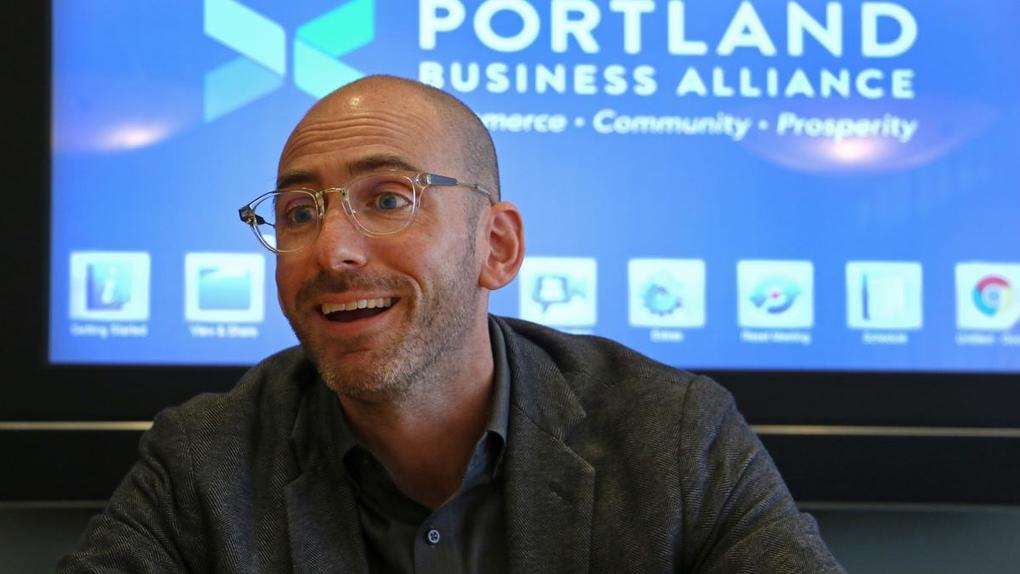
OEN Member NewsThe Portland Business Alliance’s Andrew Hoan on the region’s diversifying front (Portland Business Journal)
Nine months into my new role as president and CEO of Greater Portland’s chamber of commerce, I’m grateful for the tremendous opportunity to learn, listen and reflect with an extraordinary community of employers, both large and small, from across this beautiful region.
I’ve heard from many of you on what makes our economy thrive, where there are opportunities and where we collectively must come together to solve our most pressing challenges.
As a newcomer, from Brooklyn where I led the Chamber of Commerce, I’m listening closely to emerging themes, reflecting with fresh focus on ways we may lessen the economic disparities in our region and ensure everyone has access to family-wage jobs.
One place that keeps coming up in conversation is East Multnomah County and the economic disparities that exist in this part of the region. When it came time to prepare our region’s Economic Check-up, an annual report organized by the Alliance-led Value of Jobs coalition, we decided to include a deeper focus on East Multnomah County. Because comprehensive research is the foundation of thoughtful, data-driven public policy.
Since 2010, the Economic Check-up has tracked indicators like personal income, educational attainment, industry growth and housing supply across the region. The data serves as a trusted scorecard that informs the conversation between elected officials and business leaders on the strengths and weaknesses in our region’s economy. Regionally speaking, the good news is that we have record employment, population growth is steady and median household incomes are rising.
Our closer look this year into the economics of East Multnomah County reveals data that mandates thoughtful policy considerations. Ultimately, this is clear: East Multnomah County is our most rapidly diversifying community in the region, boasting nearly 100,000 jobs, equaling the recent record-breaking count in Portland’s Central City; it is its own economic engine.
However, despite the rising number of jobs, nearly every industry sector — from management of companies, to health care, social assistance, manufacturing and food services — offers lower average wages per employee in East Multnomah County than west of Interstate 205.
The data also uncovered a serious live-work imbalance in East Multnomah County. Most of the jobs there aren’t going to people who live nearby. More workers commute into East Multnomah County (67 percent) than into West Multnomah County (44 percent). And 69 percent of residents in East County work in a different part of the region.
When I started working on economic development in Brooklyn, only 30 percent of residents worked in the borough. We made it a priority to increase the percentage of Brooklynites living and working nearby, because we knew that by aiming for a better balance, we could help mitigate demands on New York’s congested transportation system and improve economic vitality for our residents.
Though the economic conditions are different here, it’s fair to say a better balance of live-work patterns spread more equitably across our region should be an important starting point. And equally important is the work to improve access to affordable housing and access to capital for small businesses. In our region, 49 percent of renters are cost-burdened. In East Multnomah County this number jumps to 60 percent. At our small business listening sessions, I’ve heard over and over that access to capital is priority, which inspired a recent forum focused solely on the subject.
With all of this information, we are able to see opportunities to help future-proof our economy and ensure financial stability for individuals and families throughout the region.
Despite being in one of the longest economic growth periods in our history, it is imperative we stay focused on ways we may facilitate the growth of a resilient economic future for all who live and work in our region. We must commit to a truly balanced economy that encourages a thriving entrepreneurial climate and sustainable economic growth.
I may be new to the region, but I’m committed to joining community partners who are already working on these issues in this important dialogue. Let’s work together on solutions that get us moving towards a stronger economic future for all.
This column is one of a series on the topic of access to capital. Last week, investor Stephen Green wrote about the funding chasm for black entrepreneurs.
Source: www.bizjournals.com

